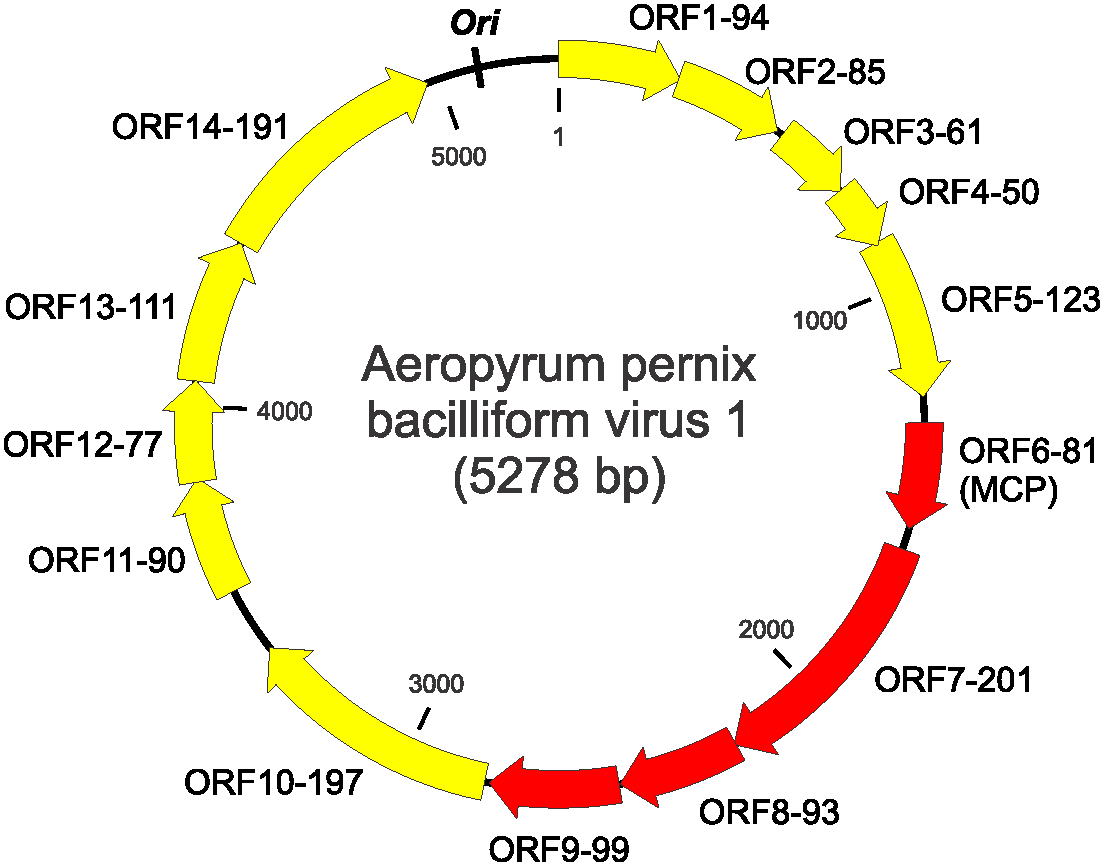Clavaviridae
Clavaviridae Overview .
Clavaviridae is a family of double-stranded DNA viruses that infect archaea. This family was first described in 2010 by a team led by D. Prangishvili. It consists of one genus, Clavavirus, which includes a single described species, Aeropyrum pernix bacilliform virus 1 (APBV1). The family name originates from the Latin word clava, meaning "cudgel," reflecting the virus's thick, stick-like morphology.

- The virions of Clavaviridae are bacilliform, measuring 143 nanometers (nm) in length and 15.8 nm in diameter. They exhibit a pointed end and a rounded end. Cryo-electron microscopy has resolved the structure of the Aeropyrum pernix bacilliform virus 1 (APBV1) virion to near-atomic resolution, revealing a helical particle composed of an alpha-helical major capsid protein with a unique structural fold. These virions are highly thermostable, retaining infectivity after incubation at 100°C for 3 hours.
- The genome of APBV1 is a circular, double-stranded DNA molecule of 5.3 kilobases (kb). It does not integrate into the host genome and includes 14 open reading frames, none of which resemble known sequences in public databases. Unlike many viruses, infection with APBV1 does not result in host cell lysis.
